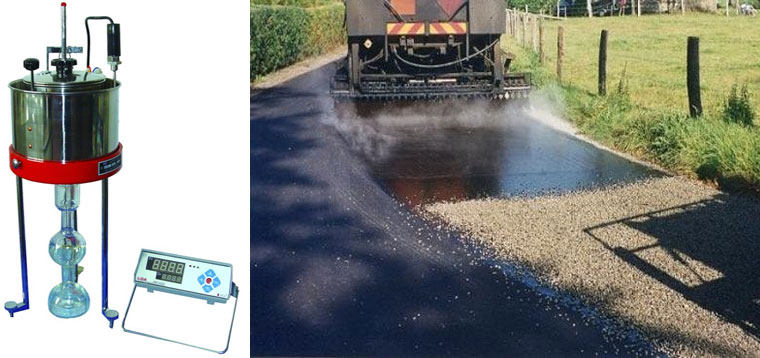Objective: Determination of viscosity of bitumen using tar viscometer
Apparatus
- Tar viscometer
- Cup
- Valve
- Receiver
- Thermometer etc.
Theory
In simple words, viscosity is the opposite of fluidity. The extent of fluidity at the utilization temperature significantly impacts the capacity of bituminous material to extend, infiltrate into voids and additionally coat the total and therefore move the strength and features of subsequent paving mixes. At point of greater fluidity or low viscosity, bitumen binder basically loosens the combined elements as a replacement for of giving an unchanging film width for binding action. Low degree of fluidity or greater viscosity will not allow the bitumen to coat the complete surface of aggregate in the blend simply and also repels the compactive effort and the resulting blend is varied in nature.
Procedure
The tar cup is correctly flattened and water in the bath is extensively warmed up to the required test temperature. Continuous stirring is also carried out. Material is warmed to 20°C beyond the experimentation temperature and material is permitted to cool down for some time. Meanwhile, this material is uninterruptedly stirred. At the point where the temperature raises up to 40°C, after that it is transferred into the cup of the tar viscometer unless the levelling peg on valve rod is completely saturated. Receiver is positioned below the orifice. Valve is released after smearing kerosene in the receiver. Stop watch is turned on at the point where the cylinder records 50 ml. Time is noted for flow up to the a mark of 100ml.
Result
Viscosity of cutback bitumen = ———seconds.
Recommended values
| Cutback bitumen SC,MC,RC of grades | 0 | 1 | 2 | 3 | 4 | 5 |
| Orifice size (mm) | 4.0 | 4.0 | 10.0 | 10.0 | 10.0 | 10.0 |
| Test Temperatures(°C) | 25 | 25 | 25 | 25 | 40 | 40 |
| Viscosity Ranges | 25-75 | 30-250 | 10-20 | 25-75 | 14-45 | 60-140 |

